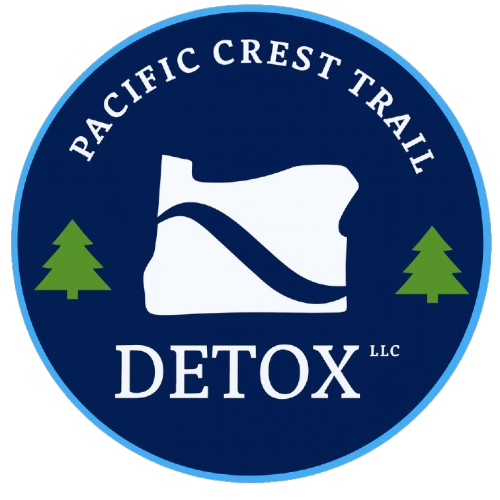For people struggling with benzodiazepine use and co-occurring mental health concerns, a partial hospitalization program for Xanax addiction helps manage withdrawal, stabilize symptoms, and build healthy coping skills.
Our partial hospitalization program for Xanax addiction is designed to offer daily structure, medical monitoring, and therapy tailored to the needs of dual-diagnosis clients.
We are here to provide a safe, focused setting for anyone who is ready to take the next step toward lasting recovery.
There are often some clear warning signs that point towards someone struggling with Xanax addiction. Some of these signs include:
One of the first signs of Xanax addiction is needing more of the drug to feel the same effects. What started as a small, controlled dose may no longer feel effective.
Over time, a person may begin increasing their dose without medical advice. This can lead to serious health risks and stronger physical dependence.
Withdrawal is a strong sign of physical dependence. This is why professional support, like a partial hospitalization program for Xanax addiction, is often necessary. These programs help manage symptoms safely and reduce the risk of serious complications.
Addiction often changes how people behave and interact with others. Some common behavioral signs include:
When these behaviors start to take over, it’s a sign that addiction is impacting daily life. A partial hospitalization program for Xanax addiction can help stabilize these patterns while supporting both the physical and emotional aspects of recovery.
Leaving Xanax addiction untreated can lead to serious health problems, and because Xanax changes how the brain works, stopping suddenly or without medical help can be dangerous.
Some of the dangers of untreated Xanax addiction include:
Stopping Xanax suddenly can trigger rapid changes in brain activity due to its short half-life and strong effects on the central nervous system.
Without a gradual taper, the brain may rebound into a state of overstimulation, leading to serious health risks such as seizures, panic, and disorientation within a short period.
This often leads people back to taking Xanax just to feel “normal” again, which makes long-term recovery more difficult.
A partial hospitalization program for Xanax addiction can help manage this process with daily structure and clinical support.
In some cases, Xanax seizures aren’t just brief or mild – they can be intense and sometimes life-threatening.
A person may lose consciousness, fall, or experience convulsions that require emergency medical care. For someone already feeling anxious, disoriented, or physically unwell, this can make the situation even more frightening and risky.
Other health emergencies can also arise, such as:
These are not symptoms that can be safely managed at home. That’s why a partial hospitalization program for Xanax addiction is often the safest choice.
Here’s what you can expect from a quality PHP like the one at Pacific Crest Trail Detox:
Every person’s experience with Xanax addiction is different. That’s why treatment needs to start with a full medical and psychiatric assessment.
From there, we build a care plan that fits your needs, including:
Personalized planning is a key part of a successful partial hospitalization program for Xanax addiction. It helps us make sure each person gets the right kind of care at the right pace.
In a PHP setting, medical providers and nursing staff monitor your progress and adjust your taper schedule as needed. You’ll be checked regularly to make sure you’re stable and safe throughout the process.
This hands-on medical support helps reduce risks and makes the taper more manageable. It also gives you a chance to focus on learning healthy coping skills and working through the emotional side of recovery in therapy sessions.
Therapy is a core part of the partial hospitalization program for Xanax addiction. It gives you the chance to work through the emotional and mental health issues tied to your substance use.
Many people who struggle with Xanax addiction also struggle with anxiety. Therapy helps them explore that connection in a safe, supportive space.
In individual therapy, you work one-on-one with a licensed therapist. These sessions focus on personal triggers, thought patterns, and specific challenges.
In group therapy, clients connect with others facing similar struggles. These sessions offer a space to share experiences, learn from peers, and practice communication skills.
Therapy in a partial hospitalization program for Xanax addiction is structured, consistent, and designed to support real, lasting change.
In a partial hospitalization program for Xanax addiction, you may attend psychoeducation sessions that help you understand how addiction works and how it affects the brain and body.
These groups help you learn how to:
As you move through treatment, your needs may change. That’s why regular assessments are part of every partial hospitalization program for Xanax addiction at PCTD.
Our team checks in with you often to monitor symptoms, track progress, and adjust medications or treatment approaches when needed. This allows us to respond quickly if someone is struggling or requires more support.
Our goal is to help you stay stable while building the tools needed to maintain recovery outside of the treatment setting.
Our partial hospitalization program for Xanax addiction is designed to help you safely recover in a supportive, structured environment.
Our partial hospitalization program for Xanax addiction includes:
Tapering off Xanax needs to be done carefully. During the program, our team is available to monitor your symptoms and make sure you’re safe. If you experience discomfort or changes during the taper, our medical team can step in right away.
This level of supervision is one of the reasons our partial hospitalization program for Xanax addiction works so well.
You are never left on your own to manage difficult symptoms.
Instead, you have a trusted team with you every step of the way, helping you regain control and move forward with confidence.
Healing happens best in a calm and welcoming space. PCTD provides a home-like setting that feels safe and comfortable, which helps you relax and focus on your recovery without the stress of a hospital-like setting.
Clients in our partial hospitalization program for Xanax addiction also benefit from private and shared areas designed to promote rest, reflection, and connection. The welcoming atmosphere helps create a sense of stability that is often missing during active addiction.
In the early stages of recovery, showing up consistently is one of the most important steps. That is why the partial hospitalization program for Xanax addiction at PCTD includes daily therapeutic groups from the very beginning.
These daily sessions help you establish a routine, build momentum, and stay grounded as you adjust to treatment. It is not just about the topics discussed. It is about creating structure, reducing isolation, and helping you feel connected to something meaningful.
By being present each day, you begin to shift away from patterns of avoidance and move toward active participation in your recovery. This consistent involvement builds confidence and lays the foundation for deeper healing.
Xanax addiction often disrupts eating habits, sleep, and physical health. At PCTD, we support your recovery with fresh, home-cooked meals each day. These meals help restore balance and give your body what it needs to stabilize.
Proper nutrition supports more than physical health. It also helps regulate mood, improve focus, and reduce the fatigue that is common during early treatment.
Sitting down for regular meals creates moments of calm and routine, which are especially helpful when navigating the emotional side of recovery.
Ongoing support is key to staying sober, managing anxiety, and building a stable, healthy life. Our team at PCTD is here to help set up a clear plan for what comes next.
Consistent care after PHP gives you structure, helps prevent relapse, and offers a space to talk through ongoing struggles in a safe environment.
For people with a dual diagnosis, learning how to manage anxiety without relying on Xanax is a big part of long-term recovery.
After completing a partial hospitalization program for Xanax addiction, it’s important to keep using the tools learned in treatment. Helpful strategies include:
Planning for the next steps in recovery starts before you leave PHP. That’s why our team works with you to build a personalized aftercare plan, which may include referrals to trusted outpatient providers, therapists, and support groups that fit your needs.
Our goal is to make sure you leave treatment with a clear plan and the confidence to follow it. Recovery is ongoing, and we’re here to help you with support, structure, and connection.
We know that recovery from Xanax addiction takes more than just medical care – it requires understanding, structure, and a team that treats you like a person, not just a diagnosis.
That is why we create individualized treatment plans built around your needs, including support for co-occurring mental health symptoms. Our partial hospitalization program for Xanax addiction offers daily structure, medical supervision, and therapeutic support in a safe, welcoming space.
We believe in compassionate care that respects where you are and helps you move forward, step by step.
If you’re struggling with Xanax use and don’t know where to turn, we’re here to help. Whether you’re just coming out of detox or require more structure than outpatient care, our team will help you find the right path.






